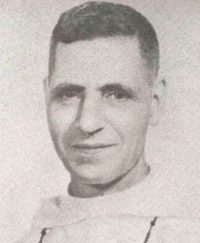I went to Calamba for a week of rest, taking advantage of the trips which the administrator of Hacienda Real had to make with his car back and forth to Manila. On our way to Calamba, we were behind a luxurious car displaying a Philippine flag. It was the car of General Artemio Ricarte, self-exile in Japan during these past year, in protest to American sovereignty. The newspapers made no mention of his arrival. A number of persons informed me that the Japanese brought him back to make a pro-Japanese campaign. From the news I gathered from various sources, the regions between Manila and Calamba about 56 km. from the capital are the least damaged by the looting and destructive forces of the invaders. Calamba was bombed for being a center of communications but the damage negligible. About five or six bridges on the way to Calamba were blown up by the USAFFE in its retreat, as well as the bridges to Batangas and Tayabas. Meanwhile, the price of sugar has soared due to heavy demand. One could see a long procession of caretelas going to the Central to purchase sugar. Within a few days the stock was sold out. The Real of Calamba is presently the most fortunate of all sugar centrals in Luzon. It stores more than 11,000 sacks. Moreover, it has resumed milling activities. The other centrals were either damaged by the war, looted, or sealed by the Army. If ever they could mill, they cannot sell their sugar since the Japanese Army takes it all, paying what they could pay. American and British-owned centrals, on the other hand, have been confiscated. Don Benito Razón, former president of the Letran Alumni Association, and who had been managing the Canlubang Sugar Central since half a year ago, invited me to dinner. As in other places, the people in this town have fled to the mountains, even if no significant destructions have occurred here. Now that the “milling” season has started, the workers are returning to their work, although milling operations are only at half capacity. The bridges are destroyed and transport to have sugar cane is lacking. Besides, all the sugar produced goes to the Japanese. Due to the good relationships existing between the plantation administrator and the military commander of Calamba, the administrator was able to secure all the permits he needed for the use of cars and wagons to operate the central and sell sugar without restrictions. He was even allowed to reconstruct a broken wooden bridge needed for the hauling of sugar cane and for public use. He is being assisted by an old Japanese employee who has remained faithful to him, preferring to return to the hacienda after being released by the Army rather than taking advantage of the New Order to further his own interests.

Juan Labrador
Spanish member of the Order of Preachers; Rector of Colegio de San Juan de Letran.
All Posts